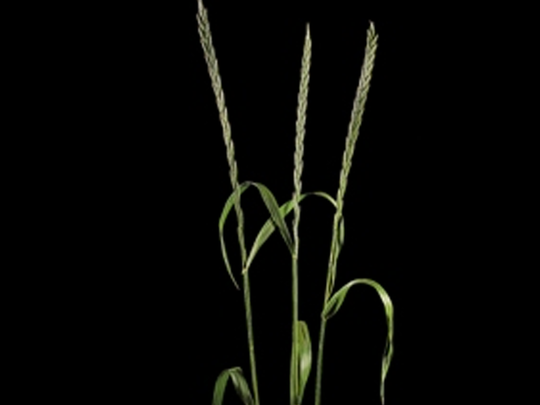Annual ryegrass is short-lived, and hardy in mild climates. After sowing and germination it goes from the vegetative to the generative stage without vernalisation and produces new stem shoots after cutting or grazing. It is very fast growing and under favourable conditions can be ready to cut after 6–8 weeks. From these fast-growing varieties the short-lived “stubble grass” was developed as a summer catch crop (6-week grass). Various new cultivars are available ranging from very fast to slower growing and short-lived to multi-cut. Like Italian ryegrass, it thrives in humid conditions on warm, damp soils. Annual ryegrass can usefully fill the gap to overcome a fodder shortage that may occur when overwintering Italian ryegrass. It benefits from being able to utilise the moisture in the soil. Patchy areas of the main fodder grass can be filled with annual ryegrass. Mixes with Persian or Egyptian clover improve the nutritional value of the forage. Short-lived but fast-growing cultivars of annual ryegrass are ideal for growing as a catch crop after cereals, providing high yields of green fodder or silage after 8–10 weeks. These are single-cut cultivars only. The stem formation makes it suitable for ensiling. Available in both diploid and tetraploid form.
The characteristic features of the leaf, culm, inflorescence and seed are identical to those of Italian ryegrass and indicate that annual ryegrass should be regarded as a subspecies.
| Leaf | Emerging leaf rolled, leaf sheath open, underside of leaf very shiny, ligule short, white and smooth-edged, auricles broad, well-defined and enclosing the stem, leaf blade moderately wide (approx. 10 mm) light to dark green. Pronounced ribs on upper side of leaf. |
| Culm | Base of culm red, erect approx. 100 cm tall. |
| Inflorescence | Long, loosely packed spikes with approx. 20–30 spikelets, multiflorous, heavily awned lemmas on individual spikelets. Spikelets with narrow side facing the axis. The terminal spikelet has 2 glumes, but the inner glume is absent in the other spikelets. |
| Fruit | Grain approx. 5–7 mm long; pedicel angular; lemma curved in the upper half, long awn (not present in Lolium perenne, frequently rubbed off during seed processing). TSW 1.8–4.6 g (tetraploid varieties have higher TSW). |

